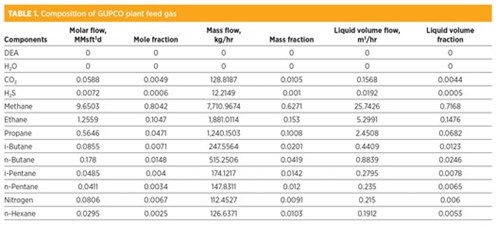

The impact of dose rate, water content, carbon dioxide and contact time were assessed on the scavenging efficiency and kinetics of two triazine chemicals used to sequester H2S from a gas stream containing 180 ppmv H2S in nitrogen, to achieve a target H2S concentrations of <10 ppmv. The liquid scavenger was atomized into the gas prior to traveling through the bed.

A continuous feed of both gas and a liquid scavenger solution were mixed through a glass bead static mixer. The performance of two commercially available hydrogen scavenger products were assessed in the laboratory utilising a specially fabricated test chamber designed to mimic a static mixer. The use of static mixers is often employed to increase the efficiency of gas-liquid mixing. The efficiency of hydrogen sulfide scavengers directly injected into gas streams is often compromised by short contact times due to space limitations on offshore assets.


 0 kommentar(er)
0 kommentar(er)
